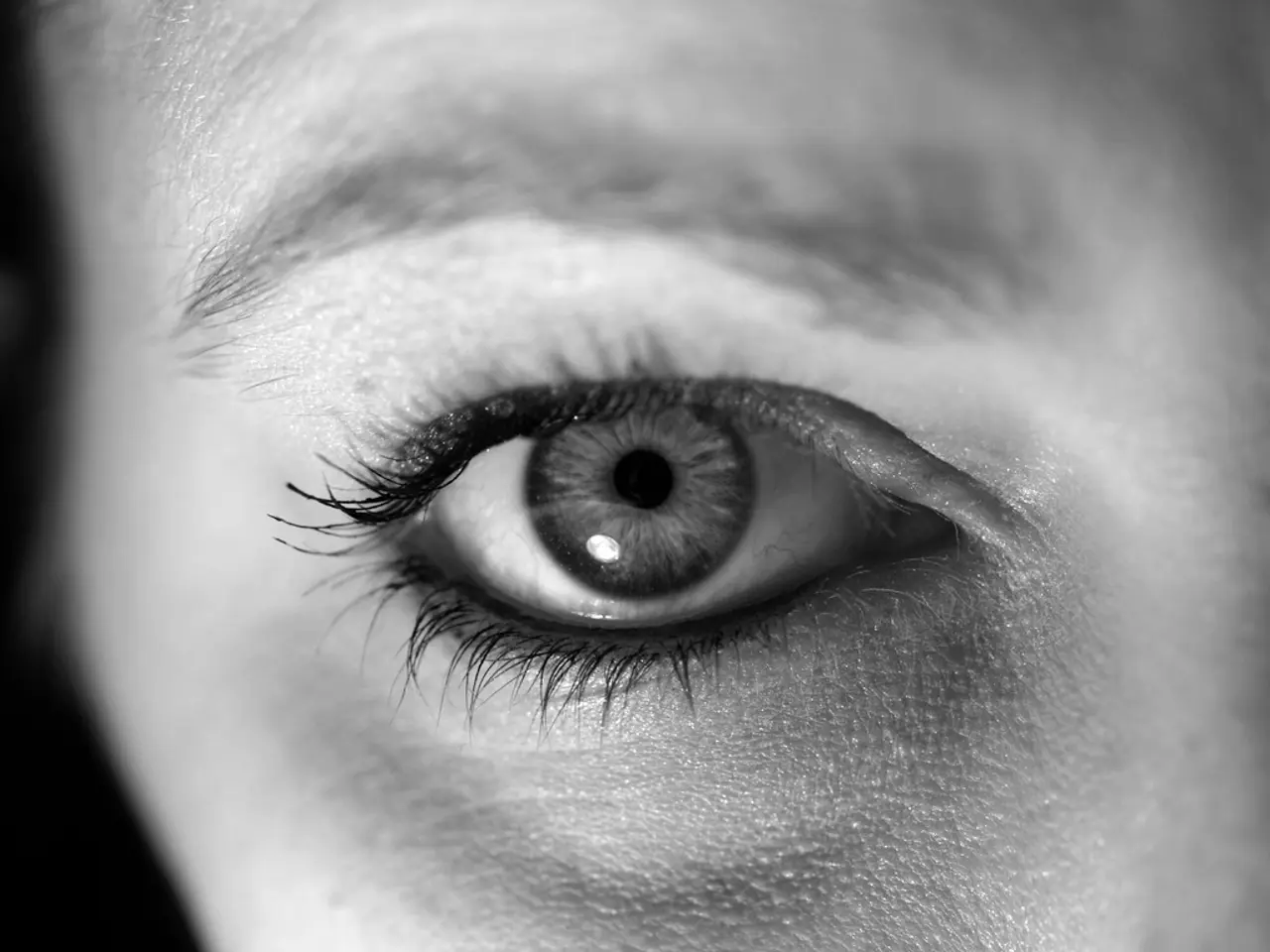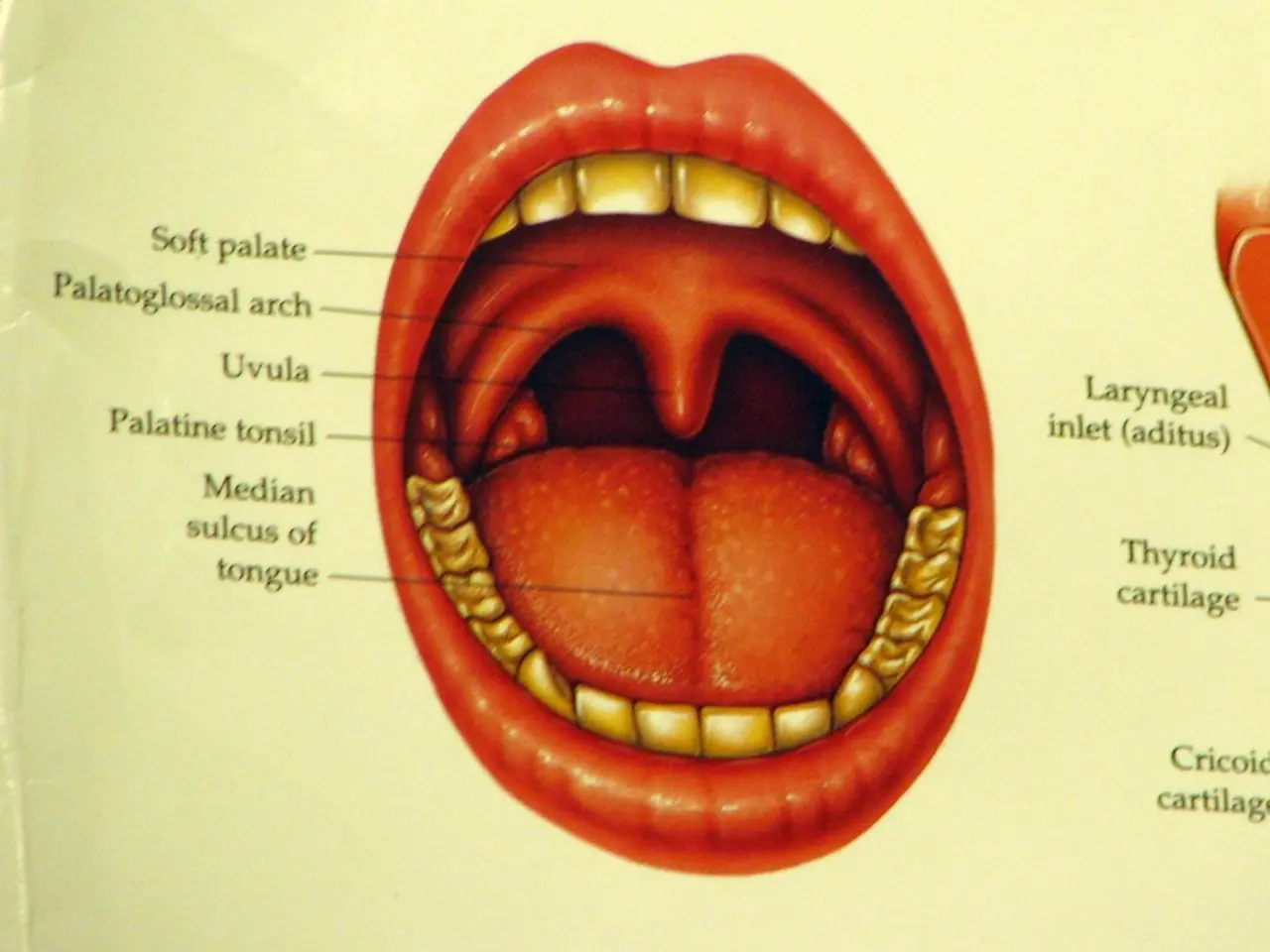Migraine affecting vision: Signs, origins, and potential dangers
In the realm of neurological conditions, migraines are a common affliction, affecting millions worldwide. Among these, ocular and retinal migraines are two distinct variants that can cause significant visual disturbances.
Ocular migraines, characterised by visual disturbances in both eyes, are a type of migraine that can make everyday tasks such as driving, walking, reading, working, and caring for young children challenging. Symptoms often include temporary flashes of stars, zig-zag lines, or other patterns, and even temporary vision loss. These visual disturbances, known as migraine aura, gradually build up over minutes, move across the visual field, and then resolve, typically lasting between 10 and 30 minutes.
On the other hand, retinal migraines involve monocular (one-eyed) visual symptoms such as partial or complete vision loss in that eye. These episodes are usually reversible and can last from a few minutes to up to an hour. Unlike ocular migraines, retinal migraines are believed to result from changes in blood flow or vascular spasms in the retina itself, rather than the brain.
The main difference between these two conditions lies in the nature and location of the visual symptoms. While ocular migraines affect both eyes, retinal migraines occur in one eye only. The symptoms' progression, duration, and clinical concern also vary between the two conditions.
Because retinal migraine symptoms can resemble other serious eye or vascular conditions, any monocular visual loss should be evaluated urgently by an eye specialist or neurologist. In contrast, ocular migraines, while potentially disruptive, are usually benign and can be managed with appropriate treatment.
In the pursuit of effective management, it is essential to consult a healthcare professional about severe, frequent, or disabling headaches, as well as those that cause other symptoms such as sensory problems or nausea. For those experiencing visual symptoms that affect only one eye, emergency care should be sought immediately.
While there is no cure for ocular migraines, treatments can help prevent or reduce symptoms. Lifestyle changes such as avoiding too much screen time, managing stress, tracking symptoms to find triggers, maintaining a healthy weight, quitting smoking, eating regular meals, staying hydrated, establishing a consistent sleep schedule, limiting caffeine and alcohol consumption, treating anxiety and depression with counseling and other options, can all contribute to reducing the frequency and severity of migraine headaches or episodes.
In addition to traditional migraine treatments, some medications developed for other conditions may also help prevent migraine symptoms. For instance, Botulinum toxin A can be prescribed to help prevent chronic migraine, and Erenumab (Aimovig), a medication that blocks the activity of a molecule called the calcitonin gene-related peptide, which plays a role in migraine episodes, is another option.
It is crucial to remember that everyone's migraine triggers are different, and common ones include staring at a screen for a long time, driving long distances, and experiencing hormonal changes. For those experiencing repeated migraine episodes, they may become more sensitive to the symptoms, leading to chronic daily headaches.
In conclusion, understanding the differences between ocular and retinal migraines is essential for accurate diagnosis and effective management. If you suspect you may be experiencing either type of migraine, it is crucial to consult a healthcare professional for guidance and appropriate care.
- A naive person might overlook the significance of visual disturbances during migraines, as these can manifest as temporary flashes, zig-zag lines, or even temporary vision loss.
- Ocular migraines, characterized by symptoms in both eyes, can create episodic headaches that make everyday tasks challenging, such as driving, reading, or caring for young children.
- Retinal migraines, however, involve monocular visual symptoms like partial or complete vision loss in one eye, which can be alarming but are usually reversible, although they can last up to an hour.
- The persona of someone suffering from a retinal migraine may need immediate medical attention, as the symptoms can mimic other serious medical-conditions, requiring urgent evaluation by an eye specialist or neurologist.
- In the health-and-wellness realm, recognizing the signs and symptoms of migraines is crucial, as severe, frequent, or disabling headaches, or those accompanied by sensory problems or nausea, warrant a consultation with a healthcare professional.
- Treatment for ocular migraines may involve lifestyle changes, including avoiding screen time, managing stress, and maintaining a healthy weight, and quitting smoking can contribute to reducing the frequency and severity of migraine headaches or episodes.
- Science has provided some options for treating chronic migraines, such as Botulinum toxin A and Erenumab (Aimovig), a medication that blocks the calcitonin gene-related peptide, which plays a role in migraine episodes.
- To effectively manage migraines, one must remember that everyone's triggers are different, and common ones include long screen time, driving, and hormonal changes, but repeated episodes can lead to chronic daily headaches or heightened sensitivity to symptoms.




